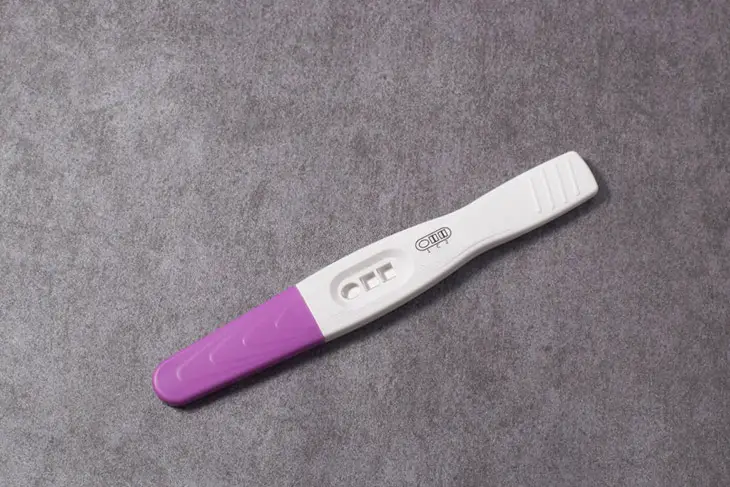“What was your implantation bleeding like before BFP?”
indicates the situation of having small-shaped tiny spots released when women wake up in the early morning, especially in the weeks of pregnancy.
This problem is considered one of the most common signs occurring the next days after implantation adaptation after getting Chorionic Gonadotropin from the doctor.
Then, if no serious incident appears or implantation bleeding stops, it may not negatively impact female health.
Check more information about the implantation bleeding BFP timeline below.
What Was Your Implantation Bleeding Like Before BFP?

Short answer: Implantation bleeding is normal and hardly brings negative pregnancy symptoms for women experiencing pregnancy tests.
Current studies admit that the number of American women getting bleeding spots after implantation accounts for 25% of all pregnant women.
This proves that it may not be a seriously worrying issue; however, the heavy red implantation bleeding BFP can warn women of other risks relating to their health (particularly ectopic pregnancy).
Many previous previews support the implantation solution being better than the other chemical pregnancy due to reducing the damage to the uterus and body at a minimal level.
Get Common Physical Problems
Women can encounter common symptoms when catching implantation bleeding, such as sore breast tenderness, headache, back pains, camping nausea, etc.
Remember that they do not occur similarly to everyone because a few women are not getting any signs listed above.
This can be explained by the health situation or human biological characteristics.
Following these signs strictly and constantly after implantation or after fertilization (if people experience the natural human pregnancy method) to restrict unexpected incidents.
See Blood Clots
When females see blood clots, they should consider the normal period.
Most women in the menstrual cycle also catch respective expressions in pregnancy; however, they tend to release little blood spots or even no spots from the beginning to the final process of getting a child.
Blood clots are the greatest signs in the bleeding period or the next days after ovulation, especially when females use cold drinks or food.
Please take note of important information to restrict confusion between the implantation analysis method and the period of bleeding.
Timeline Of Implantation Bleeding BFP
When women experience implantation bleeding BFP, they must consider its essential timeline.
The period from the days past ovulation or DPO milestone to the total of nine months of healthy pregnancy usually makes the HCG level higher.
This will make the pregnancy test line darker and express a better sign for long-term pregnancy outcomes.
Women can try other timelines, such as 12DPO BFN, 8DPO BFN, or 13DPO BFN, to get various human pregnancy advances.
If females are in the process of natural fertilization pregnancies, please follow more standard steps or tests for that.
Remember to wait about 10 days after getting bleeding spots from the human implantation method for a full blood test.
This is considered the most suitable time period to enhance the exact level of a predictor of pregnancy outcome from early signs above.
Women can see brownish blood spots or thin flows, lasting only 1 to 3 days. Many academic field methods also consider that human embryos begin to develop dramatically from that.
In reality, the onset of implantation is proved to be lighter than the normal bleeding period.
Outstanding Difference Between Menstrual Bleeding And Implantation Bleeding
The blood color is the most remarkable difference when comparing implantation and menstrual bleeding.
While implantation in women can lead to a pinkish or brownish bleeding situation, the menstrual blood spots get a dark red tone over time, including a couple of days after ovulation.
The size or structure of blood on the day of implantation range is also different from that of the menstrual cycle.
In particular, the normal bleeding period carries blood clots, and the implantation method brings thin and smooth spots in pregnant women.
The progesterone levels are considered to impact the dynamic menstrual bleeding period strongly but not the implantation process.
This indicates that the absence of implantation is attributed to other factors in the body and external environment.
Nevertheless, serious implantation bleeding and abnormal menstrual cycle can lead to pregnancy loss/ loss of pregnancies in the future.
Below is the detailed table for the differences among these definitions
| Characteristics | Menstrual bleeding | Implantation bleeding |
| Blood release level | Heavy bleeding/ big clots | Light/ thin spotting |
| Color | Red/ dark red | Brown/pink |
| Time duration | From 3 to 5 days | From 1 to 2 days |
| Release location | Uterus | Uterus |
| Key sign | Severe/ moderate cramping | light cramping/ slightly negative |
How Is Period Blood Differentiated From Implantation Bleeding?

It is difficult to differentiate between implantation bleeding and normal bleeding period in the dynamic cycle of women.
The interruption of the bleeding periods can be attributed to a positive pregnancy sign, a missed period, or high progesterone levels accumulated in the body.
Women are normally stuck in this problem because they do not follow a healthy lifestyle or catch serious illnesses.
Therefore, bleeding during the menstrual cycle is one good sign for all women.
When women get one prediction of pregnancy outcome, they will not get blood spots or a little dried spot on their panty liners as the temporary menstruation interruption.
Many previous studies also consider that this phenomenon helps females have normal pregnancies or positive pregnancy tests on their bodies.
Red spotting before BFP is bad or good for naturally-conceived pregnancies depending on the current situations or signs that women are tolerating.
FAQs
Having Red Heavy Implantation Bleeding?
Almost no. The outstanding characteristic of implantation is to give little pink or brownish bleeding spots on the panty liners.
This proves that heavy red blood release can be one common sign of the menstrual cycle or one bad expression of uterus illnesses.
Both intrauterine pregnancy and implantation hardly bring many adverse pregnancy outcomes, such as abnormal pregnancies or loss of pregnancy, if women follow a healthy lifestyle.
Women should consider using some supporting products, including a particular hormone in serum and Knox B. Serum, to protect better for their uterus over time.
How Is Implantation Bleeding Complicated?
Adapting the implantation method is really complex and requires enough time to follow and modify the lifestyle.
The late implantation process or the short peri-implantation period is not good for the health because the estrogen level required is insufficient, which can lead to pregnancy loss.
Women should accept some tests before the implantation (clinical pregnancy and human preimplantation embryos) to ensure the safety level is better.
They must also have a comparison of methods to choose the best one for them after that. e
When Should Females Call For Doctors About Implantation Bleeding?
The previous longitudinal study does not admit the right time for calling for doctors when women see bleeding spots from the implantation process.
However, females should have their bodies and health checked after getting this phenomenon in 10 days for a full blood test for any adverse other signs.
Read more news or articles about how to take preimplantation Urine samples or collection of urine right to increase the exact level for the blood test.
Conclusion
“What was your implantation bleeding like?” expresses different characteristics and signs of this method.
Women should consider many pregnancy variability methods to adopt the best solution for their health and learn more about earlier pregnancy detection to predict exactly.
